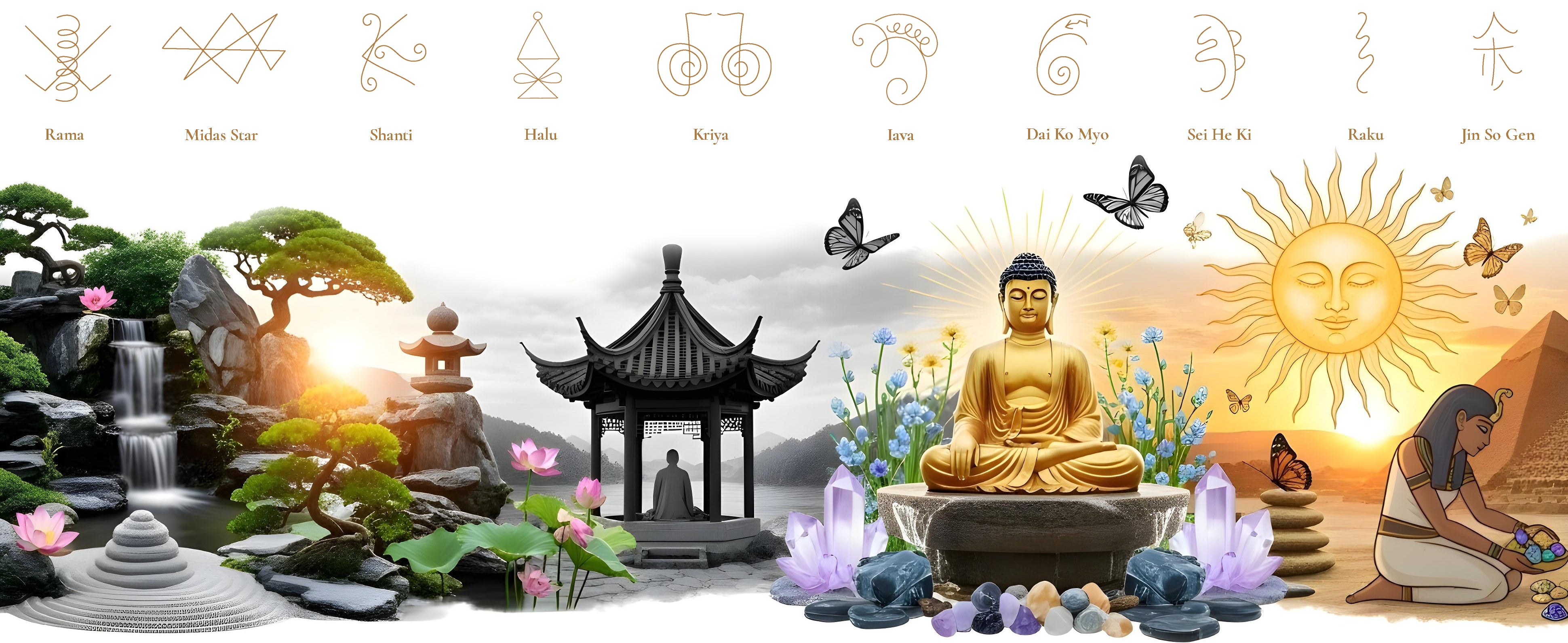Buddhism, a profound and ancient spiritual path, aims to lead individuals toward enlightenment〞the release of the soul from the binds of suffering.

Spanning thousands of years in history, Buddhism offers a straightforward method to internalize its core teachings through symbols, which are prominently featured in its art, structures, and sacred texts.
Buddhist Symbols and Their Essence
These symbols serve as gentle reminders of vital lessons, such as compassion and mindfulness, without the need for lengthy scriptural memorization or detailed studies of Buddhist history and philosophy.
In Buddhism, a variety of symbols stand for concepts like peace, love, and prosperity, among others. Here, delve into the meanings behind some of the most recognized symbols in Buddhism.
- Om - Sacred Symbol of the Universe
- Lotus Blossom - Emblem of Purity
- Swastika - Sign of Peace
- Dharma Wheel - Token of Fortune
- The Bodhi Tree - Emblem of Enlightenment
- Endless Knot - Symbol of Love
- Buddha*s Footprints - Sign of Protection
- Lion - Symbol of Strength
- Meditating Buddha - Emblem of Wisdom
Om Symbol
Meaning: Sacred Symbol of the Universe
The om symbol holds the utmost sanctity in Buddhism, representing the cosmic sound and the vibration of all existence.
As the sound of creation, om is often recited at the beginning and conclusion of Buddhist rituals and prayers, acknowledging the universe's vastness.
This symbol embodies a tripartite significance: it signifies heaven, earth, and humanity; the realms of past, present, and future; and the Buddhist trinity of the Buddha, Dharma, and Sangha.
Lotus Blossom
Meaning: Emblem of Purity
The lotus blossom is emblematic of purity, emerging unsullied from muddy waters.
This metaphor illustrates how individuals can transcend negative tendencies and thoughts to attain enlightenment.
Some also believe that this symbol can bring joy or fortune to those who embrace it.
Swastika
Meaning: Sign of Peace
Prior to its later associations, the swastika was a significant Buddhist symbol, representing the sun, a life-giving force.
The term "Swastika" originates from two Sanskrit words: su, meaning "good," and asti, meaning "being," together translating to "well-being."
Historically, it was initially a Hindu symbol of prosperity around 2500 BC and was later adopted by Buddhists in China around 700 AD, propagating as a symbol of peace across Asia.
Dharma Wheel
Meaning: Token of Fortune
The dharma wheel is among the eight auspicious symbols in Buddhism, symbolizing the Buddha's teachings, revered as the Dharma.
As a harbinger of good fortune, spinning the wheel is believed to bestow blessings in this life and beyond.
The dharma wheel's structure consists of four elements: the hub (center), spokes (the world we inhabit), and rims (the end of existence).
The hub signifies our worldly existence, surrounded by ignorance and longing. The spokes reflect our actions〞our karma〞shaping our post-mortem journey. The rims symbolize nirvana, the ultimate state of peace and joy, attainable through the elimination of ignorance and desire.
The Bodhi Tree
Meaning: Emblem of Enlightenment
The Bodhi tree holds sacred importance in Buddhism, being the site of the Buddha's enlightenment.
For Buddhists, it symbolizes the potential for enlightenment within all beings, and many choose to meditate beneath a Bodhi tree.
Endless Knot
Meaning: Symbol of Love
The endless knot signifies life's perpetual cycle, representing love, compassion, and the interconnectedness of all things.
It serves as a reminder of the consequences of our actions, impacting both our current and future lives.
Buddha's Footprints
Meaning: Sign of Protection
Buddha's footprints symbolize protection, and stepping on them is believed to bring blessings and safety.
They also serve as a reminder of the Buddha's teachings, encouraging the pursuit of enlightenment by following his path.
Lion
Meaning: Symbol of Strength
In Buddhism, the lion represents the Buddha's protective prowess over his followers, embodying strength and courage.
The lion also serves as a reminder to remain vigilant against threats and to confront them with bravery.
Meditating Buddha
Meaning: Emblem of Wisdom
The meditating Buddha, often depicted in a lotus position with closed eyes, symbolizes the quest for knowledge and enlightenment.
This symbol also reflects the Buddha's boundless compassion, believed to have the power to liberate individuals from their suffering.
Conclusion
These symbols, among the most cherished in Buddhism, each encapsulate a different facet of the Buddha's teachings. By understanding their meanings, we gain deeper insights into Buddhism and its foundational principles.
Reflecting on these symbols, we are reminded of the intricate web of karma, where each action influences the cosmic tapestry. May we act with kindness and mindfulness, fostering a world of peace and compassion.
What is the significance of the lotus flower in Buddhism?
The lotus flower signifies purity and spiritual awakening, symbolizing the ability to rise above adversity and impurity.
How is the Dharma Wheel used in Buddhist practices?
The Dharma Wheel represents the Buddha's teachings and is often used ceremonially to inspire reflection on the path to enlightenment.
What does the Endless Knot symbolize in daily life?
In daily life, the Endless Knot serves as a reminder of the interconnectedness of all actions and their impacts on our life's journey.



